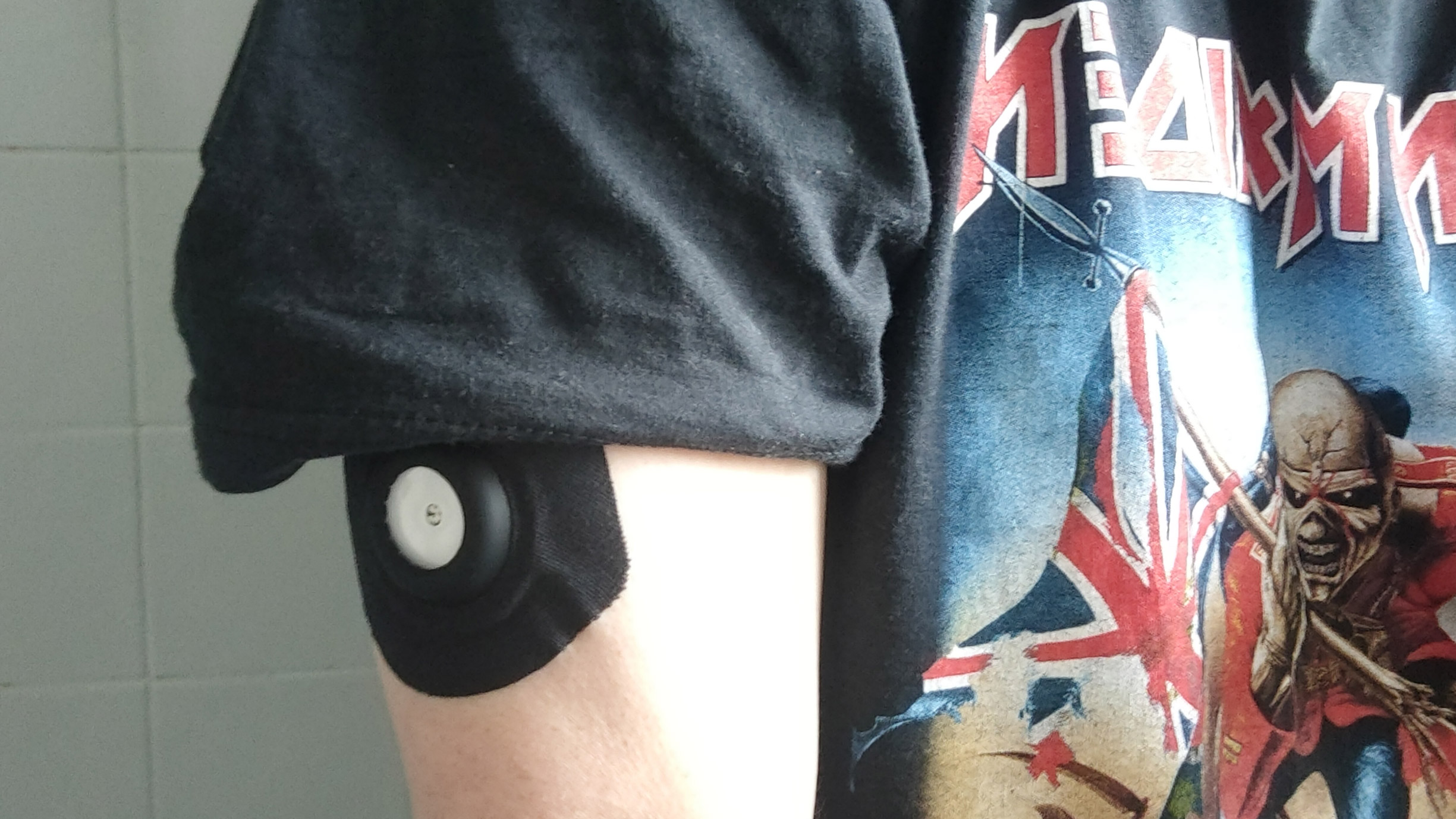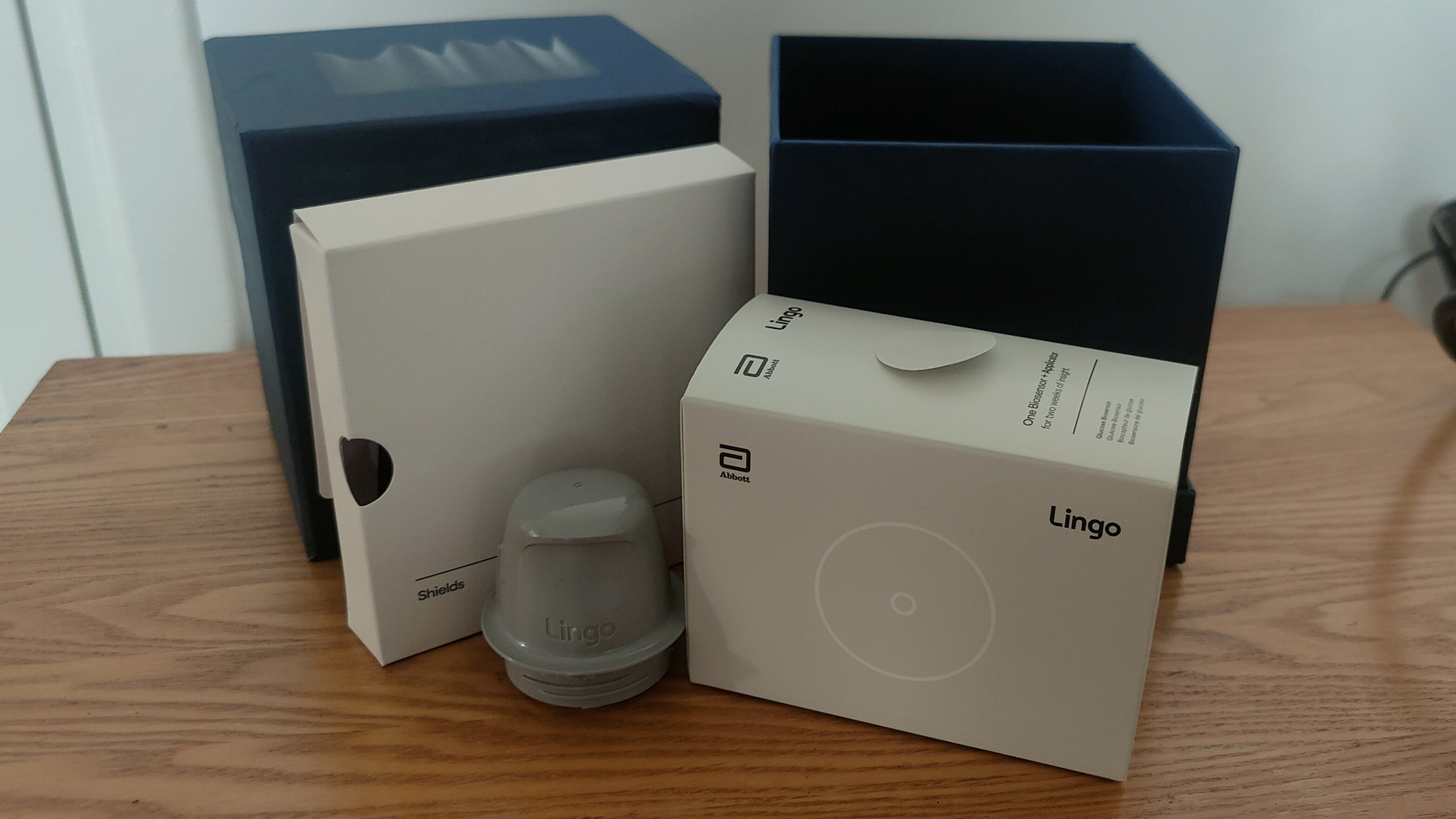[ad_1]
I hit the plunger on the applicator device, and felt the needle slide into the meat of my arm, just below the tricep. Surprisingly, it was pretty painless. I removed the applicator and there it was: a plastic disk around 1.5 inches in diameter, which would sit on my arm for the next two weeks, broadcasting my blood sugar levels to my phone at all times.
It was the morning before I went to meet the team behind Lingo, a smart continuous glucose monitor, for a healthy lunch during which I could monitor my glucose levels in real time. But what is a smart continuous glucose monitor (CGM)? Does it work, and is it worth it? Here are five things you need to know about one of the leading CGMs available right now, as well as a brief breakdown of the category.
What is a continuous glucose monitor?
Continuous glucose monitors (CGMs) have been used in medical settings for a while, mostly to track the blood sugar levels of diabetics, but they’re slowly becoming trendy smart wearable devices that allow anyone to monitor their blood sugar. You can read our comprehensive breakdown here on what CGMs are, and whether they’re right for you, along with our coverage of other CGMs such as the Ultrahuman M1.
Our blood sugar levels are closely tied to weight management, energy levels, sleep, digestion, stress, and lots more. Research from Pennsylvania State University, among others, has associated poor glucose management with weight gain.
Lingo is a smart CGM that broadcasts your blood sugar live to the Lingo app and uses the term “metabolic health” to offer a window into what’s happening in your body. Just eat a chocolate bar? You’ll be able to see a spike in blood sugar by opening the app and viewing your daily timeline. Just exercised, using up a lot of energy? You may see a dip after your session.
By helping balance out your spikes and dips with your changes in movement, diet, and overall habits, Lingo and other CGMs like it, aim to supercharge your health and energy levels.

1. It’s built from medically-certified software
Lingo is the first commercially available CGM from Abbott, a medical company that has previously supplied CGMs for diabetics in medical settings and other commercial partners.
Sarah Tan, EMEA General Manager at Lingo and the person responsible for bringing Lingo into stores in the UK, Europe, and elsewhere, said: “Lingo comes from 20 years of glucose monitoring and R&D… technology that is used by more than five million people every day to managing diabetes. There’s a good chance if you’re using another continuous glucose monitor on another app or another platform, it’s built on technology brought to you by Abbott.” The company has previously sold CGMs under its Freestyle Libre brand.
This is actually quite reassuring: in an era in which features on the best smartwatches have to fight to get FDA approval and be used in medical settings, buying a product from a medical-first company is, at least, a stamp of quality. That did reassure me slightly when I looked at the needle I was about to stick into my arm.

2. It learns about you
“We know glucose management is not something people are chatting about to each other on the street,” said Tan, “but there is a conversation about personalized health. People are time-poor, attention-poor, so to say to somebody, ‘what better way to take control of your health than knowing what’s going on inside your body at any point in time?’ That’s what we’re working towards.”
Just like the best smart rings, Fitbits, and other health-forward devices, Lingo collects data and uses it to better personalize the advice and recommendations it serves you. Your blood glucose spikes and dips are collected during the day and served up to you in an easy-to-read “Lingo Count” consisting of a double-digit number, along with personalized nuggets of advice.
For example, if you experience big spikes after lunch, Lingo might suggest you get in some light exercise after eating, which can help to flatten that post-prandial blood sugar increase.
3. It helps you adjust your behavior.
The example above is one way Lingo alters your behavioral patterns. The advice it follows is based on Lingo’s five key principles: prioritize protein, eat dietary fats, eat more fibrous green veggies, opt for savory over sweet things, and move more.
Lily Soutter, a nutritionist at Lingo, said: “This is where a biowearable like Lingo can come into play and provide that window into our bodies like never before. Not only do we see immediate benefits when managing our bloodstreams and food, but using Lingo can help us to develop those long-term healthy habits like managing stress, getting more exercise into our lives, getting more sleep. This can shift our focus for more preventative care.”
I am not the target audience for a weight-management tool. I am 5’10”, 68 kilograms and change, and I’m generally above the average level of fitness for my age group. So fortunately, even though I have a bit of a sweet tooth, I didn’t see the need to make many changes after living with Lingo for 10 days or so.
There were, however, a few points of interest for me: for example, after a heavy training session, I could see my blood sugar drop sharply on my timeline, so loaded up on lunch (with extra carbohydrates) to bring my energy levels back to a stable medium.
I also saw that unbeknownst to me, I experienced blood sugar spikes at night while I was asleep. Lingo didn’t seem to register anything wrong, and my count stayed steady at 64. But still, mildly curious and slightly concerned, I headed to the internet. The Sleep Foundation website said that “our bodies experience a cycle of changes every day—called a circadian rhythm—which naturally raises blood sugar levels at night and when a person sleeps. These natural blood sugar elevations are not a cause for concern.”
4. It’s a premium product

Lingo is not cheap. Above are the contents of a one-month box, including two non-reusable smart CGMS and sticky waterproof ‘shields’ to cover them with.
A two-month supply of non-reusable CGMS, so two boxes, costs £300, which equates to around $380 / AU$575. On a subscription, this will auto-renew at £120 per month, so for your first year, you’ll spend £1500, or around $1,900 / AU$2,900. That’s a big commitment, even for a bleeding-edge bio-wearable.
5. It’s not for everyone
As mentioned above, even though I don’t need to worry about weight loss, I had the ability to tweak my behavioral patterns to ensure my energy levels remained steady, and I had the option to investigate a spike I was unaware of. I can see how Lingo might be useful to those on the verge of being prediabetic, acting as a teaching tool to reveal previously unseen consequences of unhealthy habits. It would allow prediabetics to get their glucose levels under control before suffering from insulin resistance.
Lingo’s repackaging of a diabetes tool as a cutting-edge “metabolic health tracker” is certainly going to be appealing to the ultra-optimizing biohacking crowd as well as people who are looking to get their weight under control.
However, generally healthy people who already exercise regularly and eat a balanced diet aren’t going to get enough out of this wearable, in my opinion, to justify the ultra-premium price tag. It may be more popular as a temporary subscription, a sort of checkup for two months to reinforce healthy habits and provide answers to the curious, but ongoing subscriptions are going to cost a great deal and, perhaps, not add enough value for those who already have their glucose under control.
You might also like:
[ad_2]
Source Article Link

